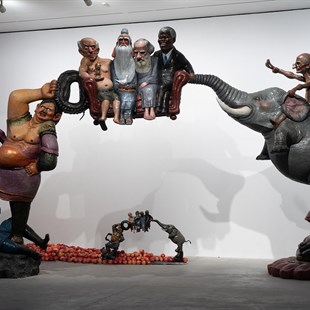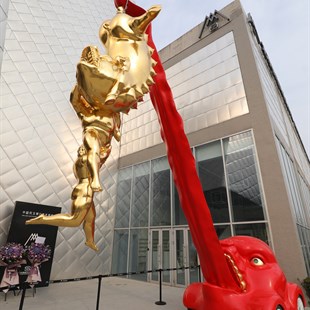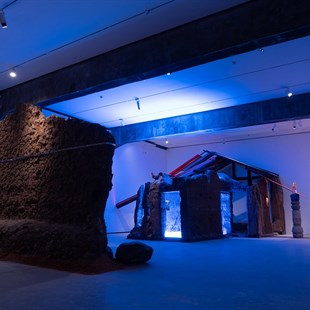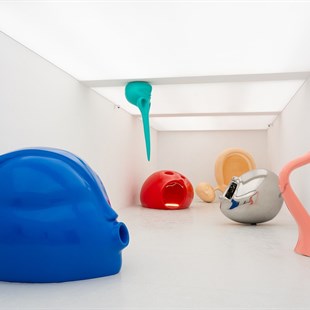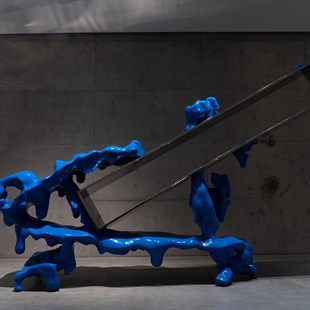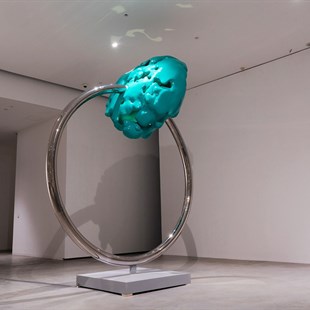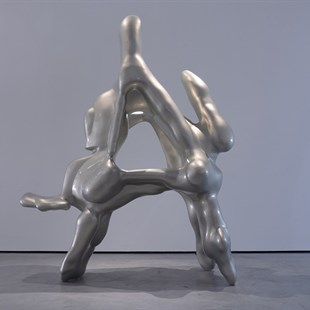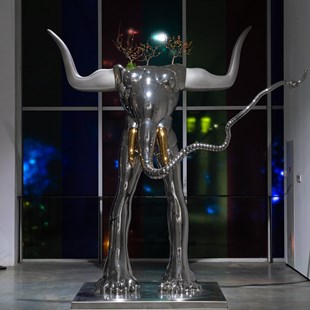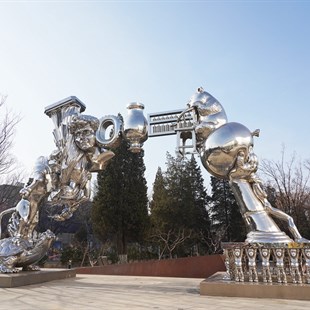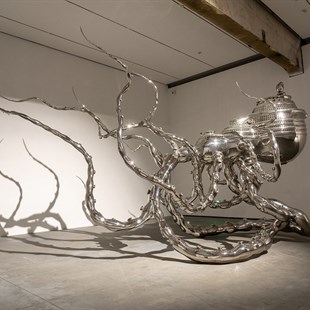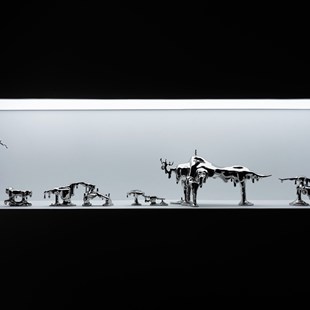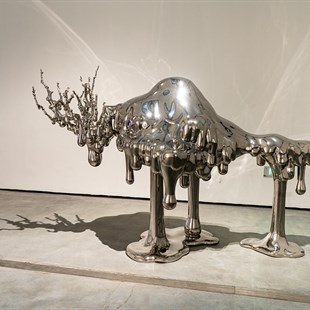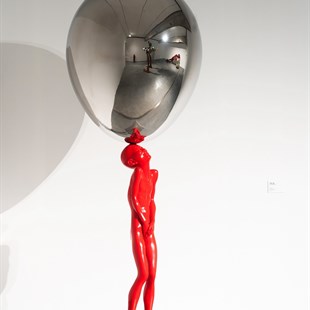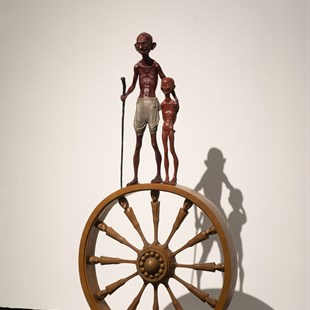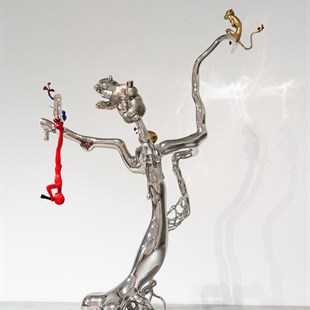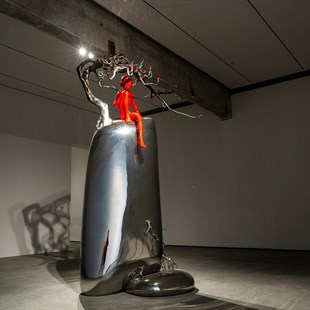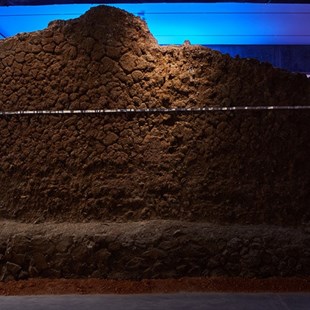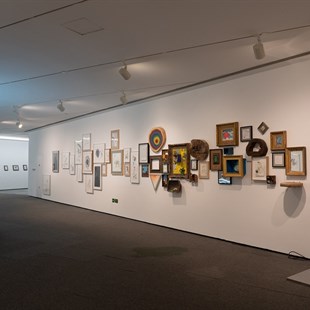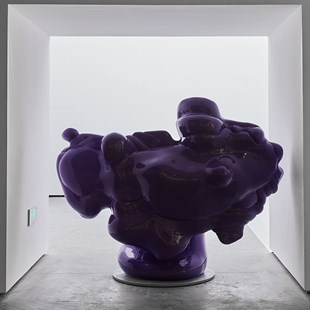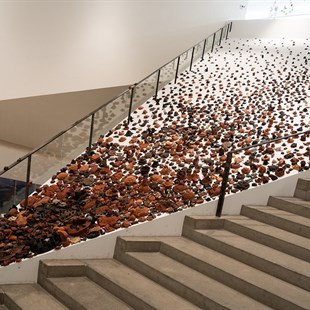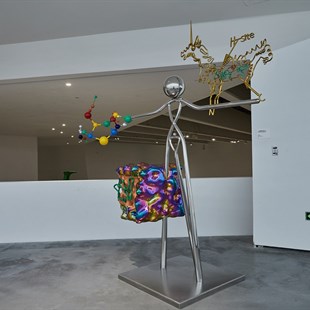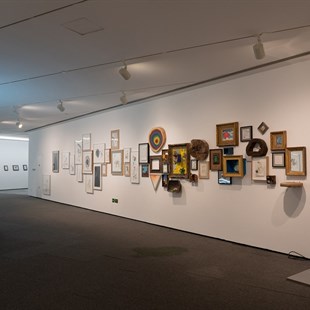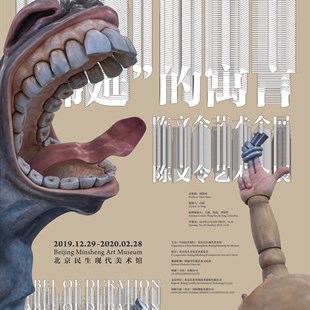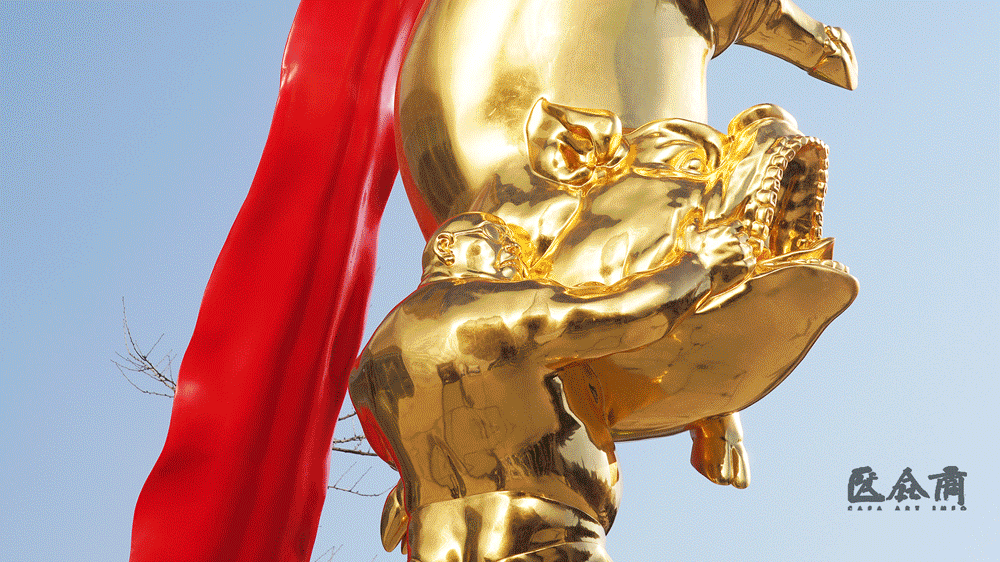
“Duration means invention, the creation of forms, the continual elaboration of the absolutely new.”
—Henri Bergson
French philosopher Henri Bergson put forward the concept of “duration” in his book Creative Evolution. “Duration” is a concept that Bergson explored in his time theory, where he divided time into two categories—one is the “space time” measured by clocks; the other is the time experienced through intuition, which he called the “psychological time”, also “duration”. “Duration” is heterogeneous, indivisible, and it continuously accumulates in the existence of past historical memories and minds for the future.
Chen Wenling’s solo exhibition at Beijing Minsheng Art Museum is entitled “Fable of Duration”. Curator Lv Peng uses Henri Bergson’s idea that “beauty is durational” as his curatorial concept, indicating to the viewers that this exhibition of Chen Wenling centers around his creative process as well as the result of current thinking. The exhibition showcases Chen Wenling's creations since 2006 and is by far the largest exhibition in Chen Wenling's artistic career, allowing the audiences to explore the "durational" road of his art.
I. Little Red Men in “Red Memory”
At the Pearl Bay Beach of Xiamen in early January 2002, every day a large number of visitors came to see Chen Wenling's sculpture exhibition “Red Memory”. We could say that “l(fā)ittle red men” is the starting point of Chen Wenling’s artistic style and also the “meta” point of his works thereafter.
When people walked into Chen Wenling’s exhibition “Fable of Duration” in 2020, the little red figure still exists, but different from the initial overwhelming situation, it shows elegance and agility and acts as the highlight and “meta” point of the artworks. In the exhibition hall, from “Another Wonderland”, “Sitting Meditation” and “Looking up to the Starry Sky”, at first glance you can tell the existence of little red men. They are not the sole element of the works, but rather the main character. The little red man in “Another Wonderland” stands upside down under the trunk of a large silver tree and looks into the distance with a telescope. There is a pig, a monkey and other animals on the tree branches, but the eye-catching little red man is still unforgettable. Created in 2017, the little red man in the works resembles a little Buddha in spiritual practice, showing tranquility and aloofness as a portrayal of the artist's heart. During the creative journey of more than ten years, Chen Wenling has been completely absorbed in the work.
II. Animals and Humans in the “World of Desires”
For Chen Wenling, “l(fā)ittle red men” constitute his path of inward thinking. Later series of works such as “Happy Life” and “Heroic Battles” started his observations and reflections of the outer world. This series of works was created around 2008 when China was gaining huge economic wealth and at the same time creating an enormous consumer market where hedonism was being fostered. Chen Wenling personified the images of various animals in a surrealistic way, revealing a sense of humorous critical realism. “Through the selection of animals, he transforms the ugliness of humans into the ugliness of animals. His sculptures always place animals and humans into a kind of relationship that is realized through ambiguity or tension between frantic humans and oversized animals. In this way, he pushed the presence of carnival, movement, power and desire to the extreme, expressing a mundane pleasure, humor and fun, and restaging the inflating and inexhaustible state of human desires in a consumer society, which further satires the gaming system of desires and money, bodies and power.”[1]
In the series “Happy Life” and “Heroic Battles”, “he grasped the moments of stout and plump people together with wild and sporting animals – fat wild pigs, fierce dogs, sexy beautiful mermaids and people who control them make up the tension of the work. However, the key does not only lie in this relationship, but more importantly, he treats these animals as the fetish objects of adult desire and asks us directly: what is desire? where does desire come from? "[2] His works are ruthless critiques of current society like black humor; nonetheless, these critiques also sublimate the beauty of the works which are transferred to spiritual and artistic levels.
Although the exhibiting sculptures “Hypernormal”, “A Child Holding Shark” and “In the Distance” are also composed of animal figures, they reveal the uneasy emotions of human beings as different from the sharpness of previous works. In “A Child Holding Shark”, the green-bodied child holds a shark that is about to melt; the child's face is empty and hopeless while looking into the distance in confusion. The giant-like child in the work “In the Distance” rides a floating pig while looking forward to flying into the future. This group of works was created in 2017 and 2018. Although they continue the creative elements from the past, the emotions given to the viewers are more introverted in later creations, which implies Chen Wenling's return to inner feelings and expressions.
III. “Community Fantasy” in the Universe
Curator Lv Peng described the current stage of Chen Wenling’s creative process as “community fantasy”. “Community fantasy” is the artist’s destination after moving from individual consciousness to collective consciousness, and then to human consciousness. This is the “duration” of the artist's life experience, which means invention, the creation of new forms, and the continual elaboration of the absolutely new. [3] The argument is also confirmed in the latest installations displayed in the exhibition.
As the artist’s life experience grows, the core and boundaries of his focus have deepened and expanded to varying degrees. This attention and observation is like that of when “the artist’s thinking has risen from individual lives to the fate of the community with universal significance. In the creation of “Universe” and “Community” series, the artist takes the eternal life and the interweaving of distinct civilizations as his main subjects of expression.”[4]
The installation “Humanistic Landscape Series” fissures and magnifies the material forms of the figurative landscape, thus provoking discussions about general functions and the essential significance of material forms. When the work is presented on a gigantic scale, its parts reveal the physical beauty of the body of material. When viewed from a distance, the work seems to return to the smallest particle state. Sculptures are processes and results of human beings changing the external form of matter through external forces, but the material nature of sculptures has never changed. Currently, sculpture only stays on the level of shaping and has not reached qualitative changes. Perhaps these are the new thoughts brought by Chen Wenling’s sculptures.
“The Banality of Evil” is a work with its own plot—wild disorder, massive scale, complete drama. But its title is implicit: “The Banality of Evil” in English is a philosophical term, which refers to committed crimes without consciousness or responsibility within the ideological machine—the elimination of one's own thoughts, the unconditional obedience to orders and the evil of abandoning the right to judge as an individual. [5] The idea behind this work is profound, with extensive reflection on the human mind. The viewers are compelled to look back and reflect on the negative consequences brought up by unconscious human behaviors in history.
“The Battle of Senses” extracts the shapes of human sensory organs and applies the sharpest and brightest colors to place the viewers in a candy-like paradise. The enormous works are accompanied by interactions of dance performances. Interactivity is also one of the characteristics of Chen Wenling’s works, especially when works of large volumes are placed in public spaces, generating a strong interactive charm. A large number of Chen Wenling’s manuscripts are also shown in the exhibition, full of bold imagination and witty satire, which reveal Chen Wenling’s strong literati sentiments as an artist.
In the “durational” fable written by Chen Wenling, he brings an illusory and dramatic performance to the audience. These performances are probably staged every day in the real world, but we unconsciously choose to ignore them. However, Chen Wenling's works come as annotations of social phenomenon, guiding people into proofreading, understanding and reflecting once again.
Text by Lin Lu, translated by Yuting He and edited by Sue/CAFA ART INFO
Photo Courtesy of the Organizer
References:
[1] [2] Huang Du. “From ‘Happy Life’ and ‘Heroic Battles’ to ‘Chinese Landscape’—Interpreting the Transformation of Chen Wenling’s Sculptural Language” [J]. Beauty and Times, 2008(04): 16-17.
[3] (France) Henri Bergson. Creative Evolution [M]. 2013.
[4] Exhibition preface.
[5] “What is Mundane Evil”. Chinese Academy of Social Sciences Website. [Accessed on 26 January 2016]



